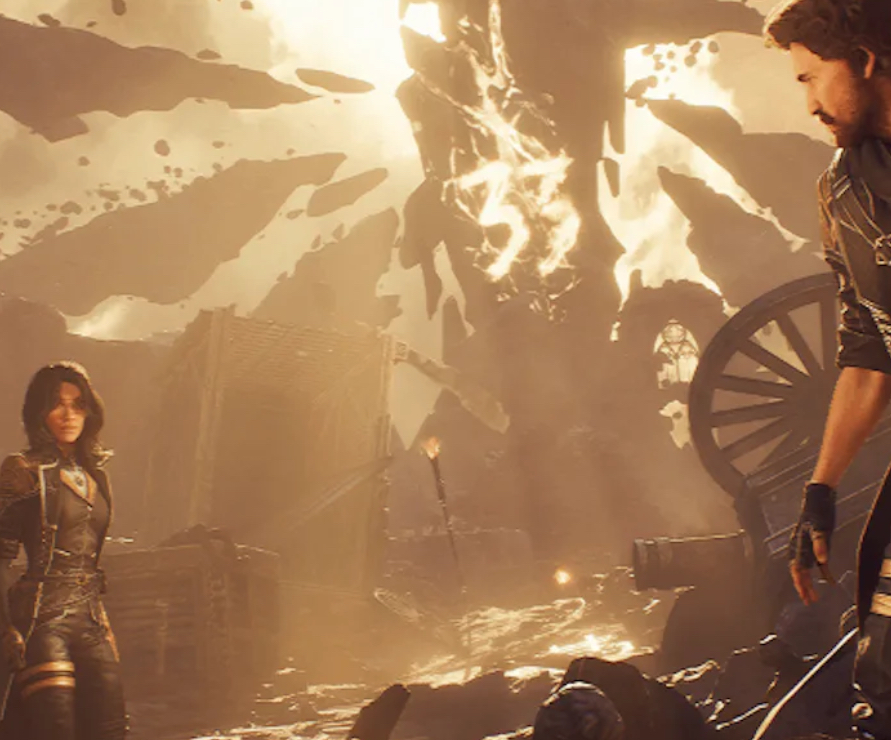In the fevered landscape of contemporary gaming, where franchises dominate storefronts and studios bank on sequelization, a debut title from an unknown developer breaking through the noise is as rare as it is thrilling. That’s precisely what Clair Obscur: Expedition 33 has accomplished. Released by Sandfall Interactive, a studio whose name was virtually unknown a year ago, the game has not only outperformed industry expectations—it has redefined them. Positioned against AAA titans with decades-long reputations and massive marketing budgets, Expedition 33 has proven itself as both a commercial and critical marvel, a poetic answer to the industry’s craving for soul in the middle of spectacle.
The Spellbinding Concept: A Death Sentence by Numbers
At its heart, Clair Obscur: Expedition 33 is an RPG forged in contradiction. Its world is equal parts fantastical and fatalistic. Players are thrown into a visually arresting setting—the continent of Kalandra—where every year a godlike Painter selects a number, and those who bear that number are fated to die. No battles, no appeals—just vanishing. This brutal lottery underpins the game’s tension. As players embody Gustave and the titular Expedition 33, a band of rebels seeking to destroy the Painter and end this cycle of curated annihilation, they embark on a pilgrimage through painterly vistas, philosophical dilemmas, and deeply personal loss.
The genius of the concept lies in its tight metaphysical bind: mortality, fate, and the burden of defiance. But Sandfall doesn’t simply treat this as narrative dressing. The game’s systems—combat, exploration, and dialogue—are drenched in consequence. The result is an experience that is mechanically precise but narratively fluid, allowing players to feel the weight of the world pressing inward at every turn.
Aesthetic Splendor and Painterly Despair
It’s no surprise that Clair Obscur takes its title from an art movement. The French term “clair-obscur,” meaning light-dark, or what the Italians call “chiaroscuro,” speaks to a tradition of contrast: light defining shadow, shadow defining depth. The game’s visual language is drawn directly from this. Inspired by French baroque and romanticist painters, the environments appear as if pulled from oil canvases, complete with hypertextured light bloom, cracked brushstroke textures, and mise-en-scène compositions that feel as theatrical as they are interactive.
From the ethereal city of Lysistrata, perched on the edge of a cliff bathed in perpetual dusk, to the labyrinthine ruins of the Warded Marshes, Expedition 33 treats its settings as characters. The visual choices are never arbitrary—they deepen lore, evoke mood, and build a world that feels elegantly cruel and unknowable.
Character design follows suit, blending historical silhouettes with fantastical detailing. The Expedition team itself evokes 19th-century revolutionaries armed not with muskets, but with relic-powered abilities that reflect individual trauma and choice. Sandfall Interactive’s commitment to detail never reads as ornamental—it’s functional worldbuilding that immerses rather than distracts.
Combat With a Pulse
The turn-based combat system is perhaps Expedition 33’s most thrilling achievement. While many RPGs have become bogged down in menu navigation and predictable progressions, Clair Obscur revitalizes the format with a kinetic, rhythm-based twist. Timed blocks, counters, and combo strings bring urgency to every encounter. It’s reminiscent of Legend of Dragoon or Paper Mario in execution, but here it’s framed by cinematic flair and psychological stakes.
Each character’s skill tree reflects their internal struggles—making combat a narrative act as well as a tactical one. Gustave’s moveset is heavily built on suppression and rage, while other party members like Bellatrix or Leontius channel guilt or abandonment through spectral attacks and passive debuffs.
Boss fights, in particular, feel choreographed to near-operatic levels, with arena design, music, and narrative alignment fusing into unforgettable showdowns. One standout features a duel atop a suspended aqueduct during a lightning storm, where each successful block not only keeps the character alive but literally keeps them from plummeting to their death. In these moments, gameplay and theme achieve rare unity.
Narrative Intimacy in a Colossal World
What separates Expedition 33 from the herd of grand RPGs is not just its aesthetic or combat innovation, but the intimacy of its storytelling. Sandfall Interactive has written a world that never hides behind lore dumps or exposition-heavy NPCs. Instead, every line of dialogue is tempered with emotion, restraint, and world-specific metaphor. The writing balances the poetic with the pragmatic, avoiding the overwrought in favor of human drama dressed in myth.
The story is nonlinear in spirit if not in structure. Flashbacks, dreams, and hallucinations interrupt the main narrative—not as plot devices, but as commentary. In one memorable scene, a party member walks through a burned-out cathedral, reliving the moment she turned in her brother to the Painter’s Guard. It’s not an optional side quest. It’s essential, and its emotional fallout alters the way she interacts with enemies and allies going forward.
Themes of grief, resistance, and reclamation ripple throughout the game without turning into moralistic diatribe. Clair Obscur resists the easy binary of good and evil. The Painter, while monstrous, is given philosophical voice. And even the heroes question the ethics of destabilizing a cycle they do not fully understand. The game’s conclusion, with multiple variations dependent on narrative alignment and character development, is a masterclass in player agency.
Industry Disruption by Design
The story of Clair Obscur: Expedition 33 doesn’t end with the credits. Its impact on the industry is just beginning. Sandfall Interactive, a Montpellier-based studio composed of industry veterans and fresh creatives, has quickly become a name to watch. The success of Expedition 33—critically and commercially—has proven that new IPs with artistic daring and philosophical density can thrive in a landscape long dominated by safe bets.
The game’s engine—custom-modified Unreal 5—demonstrates what happens when fidelity is paired with thematic intention. The ray-traced lighting isn’t just flashy; it’s meaningful. Light in this game is narrative. And shadows, in turn, carry weight.
Sales-wise, Clair Obscur has held its own against juggernauts like Final Fantasy XVII and Dragon Age: Veilfall, with many reviewers calling it the most innovative RPG since Disco Elysium or NieR: Automata. Its Metacritic and OpenCritic scores reflect not just buzz, but substance. It has set a new bar—and gamers, critics, and developers are watching closely.
The Fin
Clair Obscur: Expedition 33 is not simply a great debut—it’s a great game, full stop. It is the rare title that trusts its players’ intelligence, emotional acuity, and patience. It moves slowly when it needs to and hits hard when it must. It’s a game that dares to be about something—and because of that, it becomes everything.
In a medium often reduced to mechanics and monetization, Sandfall Interactive has delivered art. Not just in its visuals, but in its refusal to compromise. Expedition 33 is a triumph, not just because it plays well or looks beautiful—but because it remembers what it means to believe in the transformative power of storytelling.
No comments yet.








